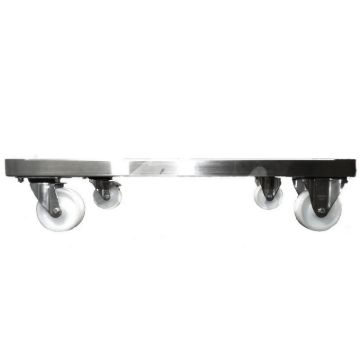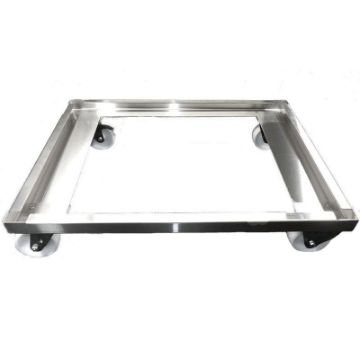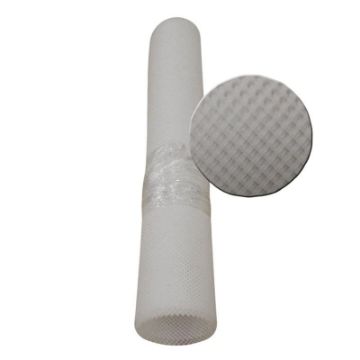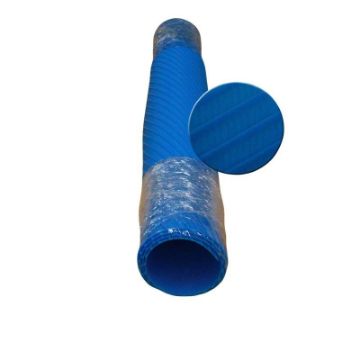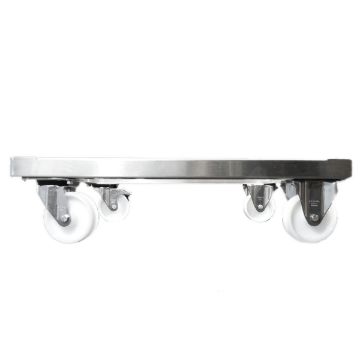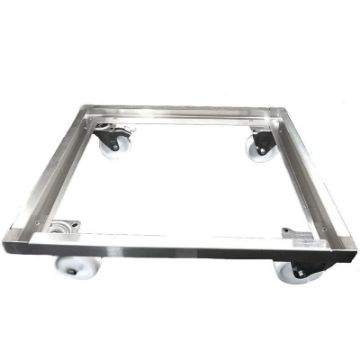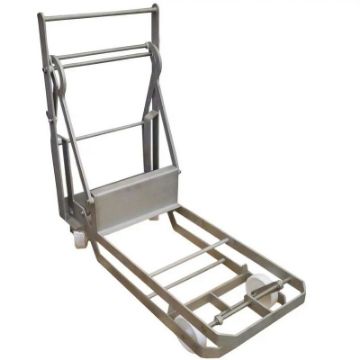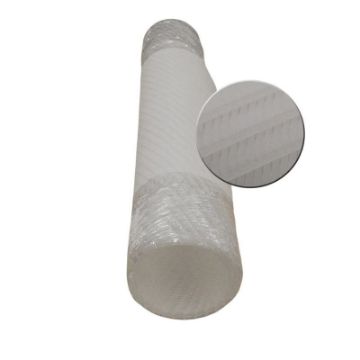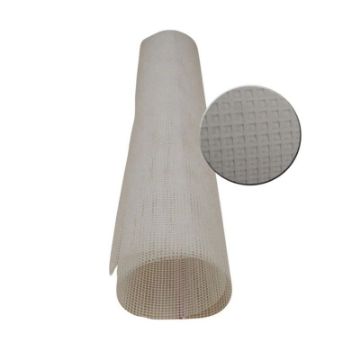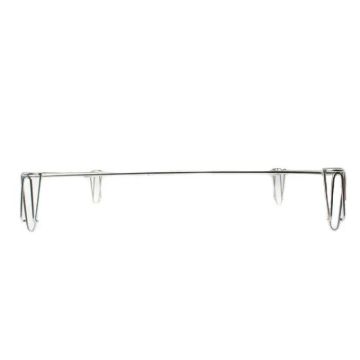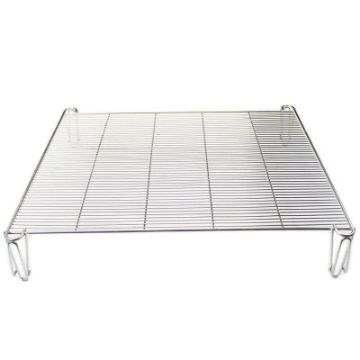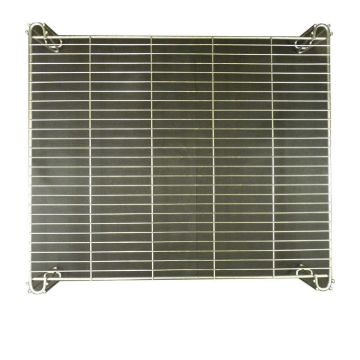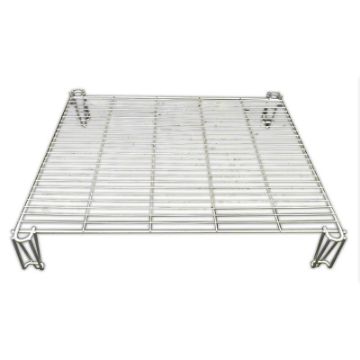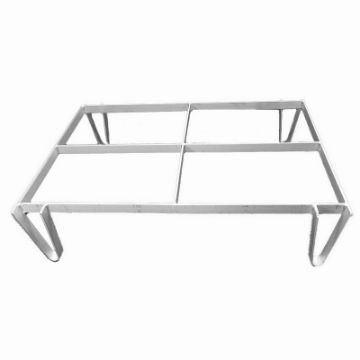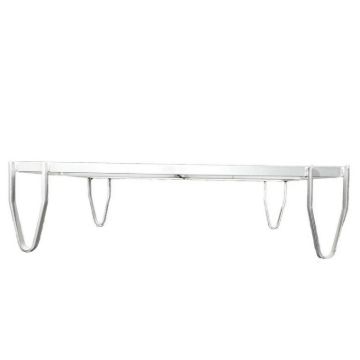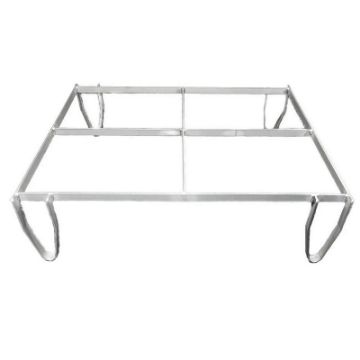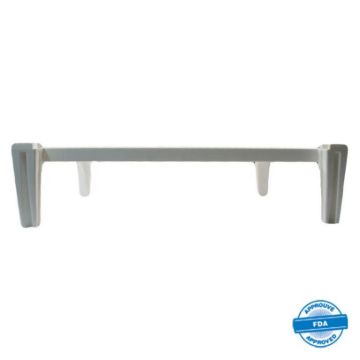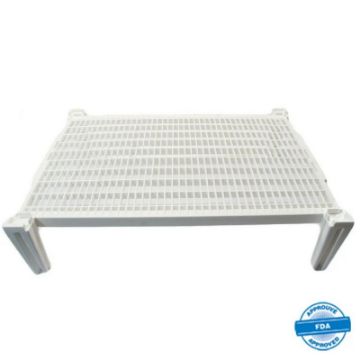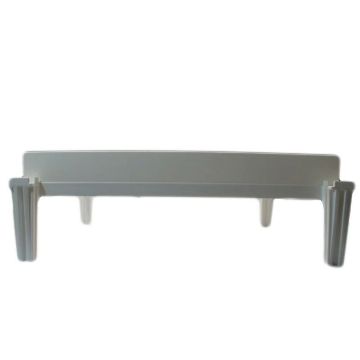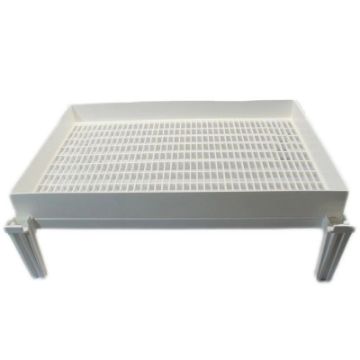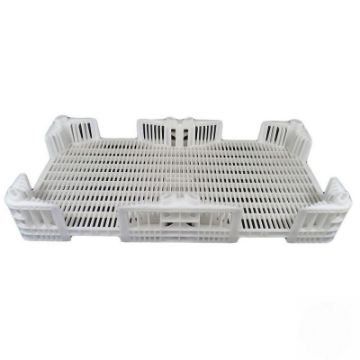Plant A Products
Base on wheels for ripening rack 760 x 580mm and 750 x 510mm - 4 in. wheels
Ripening mat medium #1 50cm x 1m
Mats for covering racks
Covering racks with mats helps minimize the marking of delicate cheeses.
Ripening mat straw type 69 cm x 1 m
Mats for covering racks
Covering racks with mats helps minimize the marking of delicate cheeses.
Base on wheels for ripening rack 630 x 510mm
Ripening mat straw type 69cm x 1m
Mats for covering racks
Covering racks with mats helps minimize the marking of delicate cheeses.
Ripening mat diagonal 50 cm x 1 m
Mats for covering racks
Covering racks with mats helps minimize the marking of delicate cheeses.
Ripening mat square mesh 1 m x 1 m
Mats for covering racks
Covering racks with mats helps minimize the marking of delicate cheeses.
Stainless steel aging rack 630 x 510 mm, 51 wires, H120/100 mm
For a homogeneous rind development
The racks are assembled in stacks, leaving sufficient space for uniform ventilation of each cheese.
Racks constructed from stainless steel wire are a flexible solution that optimizes space in the factory, from storage to use.
Our wire stainless steel aging racks are used for ripening, brining and drying cheeses allowing an optimal ventilation and support of the products.
The choice of rack size should be done according to the cheese size and type.
They stack legs on legs to create shelves where the cheeses can be placed.
This modular solution will optimize the space in the room allowing an even result and an easy manipulation.
It suits well for fresh, soft and semi-soft cheeses, blue cheeses and other varieties that need to ripen or dry.
Made in #304 SS.
Assembly of the wires on the frame by food-grade spot welding.
Stainless steel aging rack 630 x 510 mm, 25 wires, H120/100 mm (Electropolished)
For a homogeneous rind development
The racks are assembled in stacks, leaving sufficient space for uniform ventilation of each cheese.
Racks constructed from stainless steel wire are a flexible solution that optimizes space in the factory, from storage to use.
Our wire stainless steel aging racks are used for ripening, brining and drying cheeses allowing an optimal ventilation and support of the products.
The choice of rack size should be done according to the cheese size and type.
They stack legs on legs to create shelves where the cheeses can be placed.
This modular solution will optimize the space in the room allowing an even result and an easy manipulation.
It suits well for fresh, soft and semi-soft cheeses, blue cheeses and other varieties that need to ripen or dry.
Made in #304 SS.
Assembly of the wires on the frame by food-grade spot welding.
Plastic aging rack 745 x 505 mm, H180/160 mm
Robust rack adapted to heavy loads
Plastic racks are light and sturdy, suitable for pressed cheese.
Our plastic aging racks are used for ripening, brining and drying cheeses allowing an optimal ventilation and support of the products.
The choice of rack height should be done according to the cheese size.
They stack legs on legs to create shelves where the cheeses can be placed.
This modular solution will optimize the space in the room allowing an even result and an easy manipulation.
It suits well for semi-hard to hard cheeses and blue cheeses.
Made in injected food-grade polypropylene, they are heavy duty and can be stack with a lot of weight on at more than 2 meters.
Plastic brining rack 725 x 485 mm, H175/155 mm
Robust rack adapted to heavy loads
Plastic racks are light and sturdy, suitable for pressed cheese.
Our plastic aging racks are used for ripening, brining and drying cheeses allowing an optimal ventilation and support of the products.
The choice of rack height should be done according to the cheese size.
They stack legs on legs to create shelves where the cheeses can be placed.
This modular solution will optimize the space in the room allowing an even result and an easy manipulation.
It suits well for semi-hard to hard cheeses and blue cheeses.
Made in injected food-grade polypropylene, they are heavy duty and can be stack with a lot of weight on at more than 2 meters.
Vega Nu-trish BB-12 (DA) Frozen 500 g (Box of 10 pouches)
Thermophilic lactic acid culture.
The culture is a defined single strain with a long history of safe use.
Substantial clinical documentation on possible health benefits are avaliable upon request and likewise are certificates of identification and certificates of safety and origin.
BB-12® is a registred trademark of Chr.Hansen.
This culture has been produced without the use of dairy derived ingredients in any part of the production steps.
The culture is manufactured in an environment where dairy ingredients are handled.
However, the process equipment is cleaned according to our GMP standard before production of this culture.
Nu-trish® LGG Frozen 500 u
Thermophilic nu-trish® culture for manufacturing yoghurt.
Contains the documented probiotic strain BB-12®.
The strain has a long history of safe use and substantial clinical documentation on possible health benefits are avaliable upon request.
Likewise are certificates of identification and certificates of safety and origin.
The culture will produce yoghurt with very mild flavor, extra high viscosity and very low post-acidification.
Suitable for drinking yoghurt.
Vega Harmony Frozen 500 u
This culture has been produced without the use of dairy derived ingredients in any part of the production steps.
The culture is manufactured in an environment where dairy ingredients are handled.
The culture is used in the production of drinking, stirred or set fermented products made from dairy alternatives.
The dairy alternative base should have a pH ?
7 to ensure sufficient activity of the culture and it should contain enough fermentable sugar to reach pH 4.5 in the final product.
Fermentation temperature should be 38°C – 43 °C.
The final product should be stored at 8 °C.
The maximum shelf life of the final product is 60 days at 4 °C or 28 days at 8 °C.
Vega Mild Frozen 500 u
Thermophilic lactic acid culture.
This culture has been produced without the use of dairy derived ingredients in any part of the production steps.
The culture is manufactured in an environment where dairy ingredients are handled.
The culture is used in the production of yoghurt products such as drinking or stirred, made from dairy alternatives.
Vega Vibe Frozen 500 u
This culture has been produced without the use of dairy derived ingredients in any part of the production steps.
The culture is manufactured in an environment where dairy ingredients are handled.
The culture is used in the production of drinking, stirred or set fermented products made from dairy alternatives.
The dairy alternative base should have a pH ?
7 to ensure sufficient activity of the culture and it should contain enough fermentable sugar to reach pH 4.5 in the final product.
Fermentation temperature should be 38°C – 43 °C.
The final product should be stored at 8 °C.
The maximum shelf life of the final product is 60 days at 4 °C or 28 days at 8 °C.
Vega Boost LH Frozen 250 u
The culture is designed to be used as an adjunct, in combination with a Vega™ starter or probiotic culture, in production ofthe fermented plant-based alternatives.
Vega™ Boost LH has been carefully selected for its potential to improve acidification time, and has effect on taste and flavor.
The effect is base dependent and cannot be generalized.
The culturecan be used as a single adjunct culture, or combined with other Vega™ Boost cultures.
Vega Boost LP Frozen 250 u
The culture is designed to be used as an adjunct, in combination with a Vega™ starter or probiotic culture, in production of the fermented plant-based alternatives.
Vega™ Boost LP has been carefully selected for its potential to improve acidification time, and has effect on taste and flavor.
The effect is base dependent and cannot be generalized.
The culture can be used as a single adjunct culture, or combined with other Vega™ Boost cultures.
Vega Premium Frozen 500 u
This culture has been produced without the use of dairy derived ingredients in any part of the production steps.
The culture is manufactured in an environment where dairy ingredients are handled.
The culture is used in the production of drinking, stirred or set fermented products made from dairy alternatives.
The dairy alternative base should have a pH ?
7 to ensure sufficient activity of the culture and it should contain enough fermentable sugar to reach pH 4.5 in the final product.
Fermentation temperature should be 38°C – 43 °C.
The final product should be stored at 8 °C.
The maximum shelf life of the final product is 60 days at 4 °C or 28 days at 8 °C.
- 1
- 2


